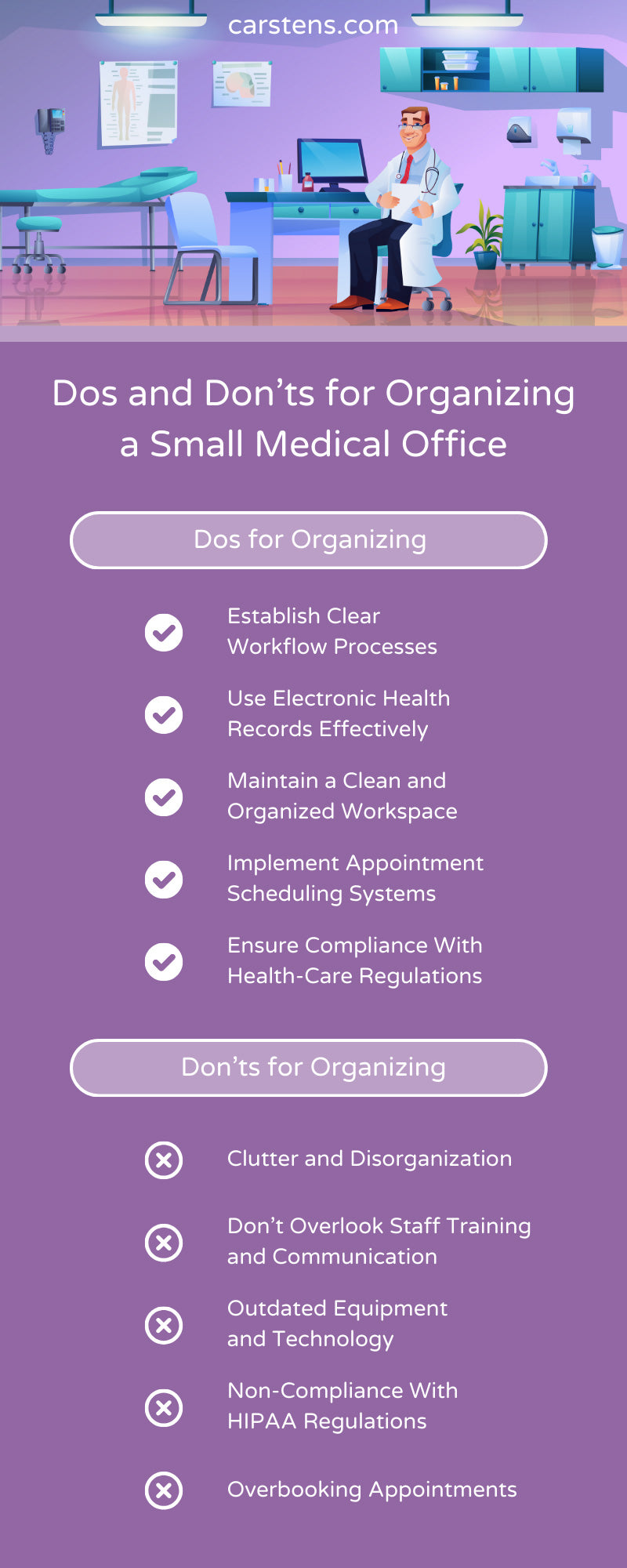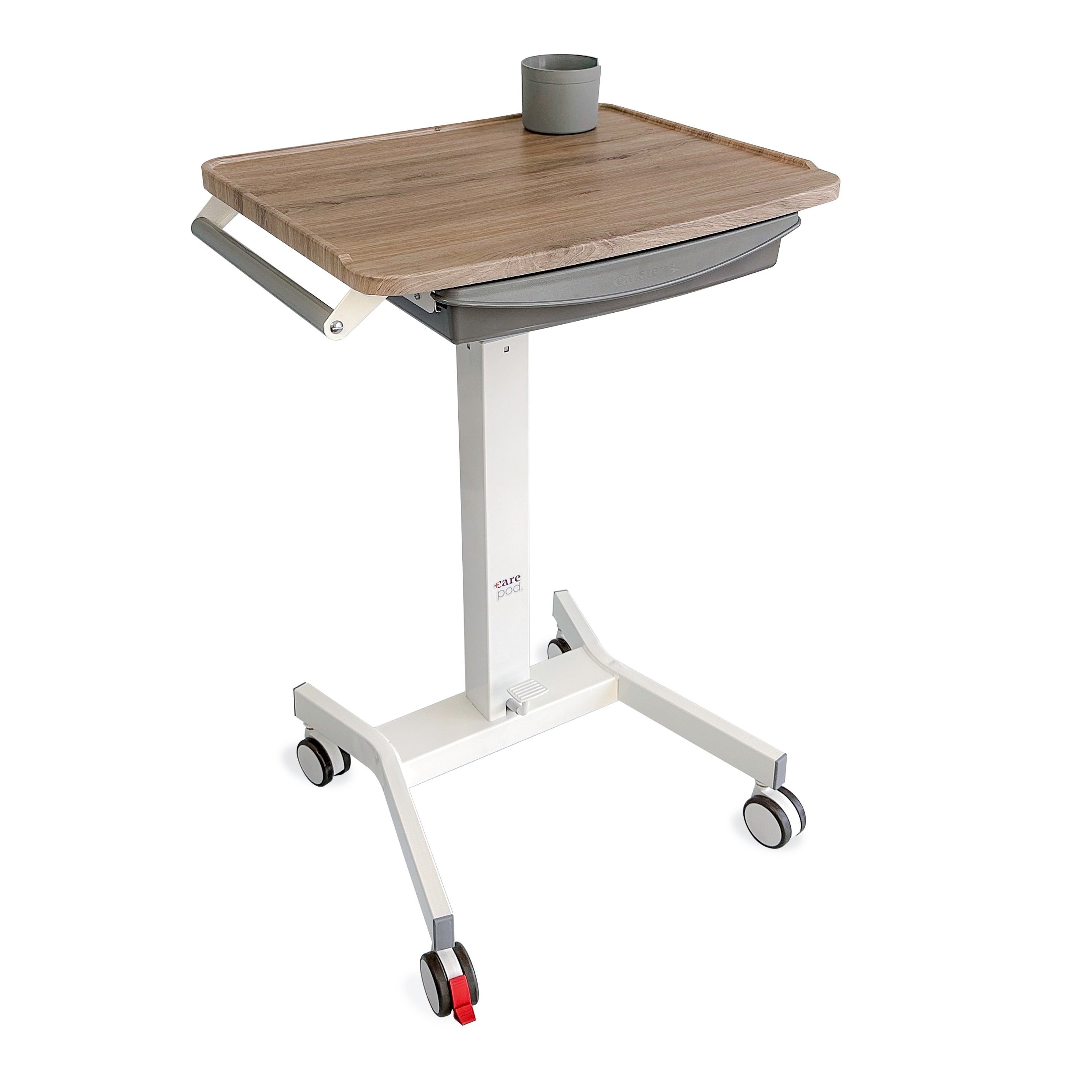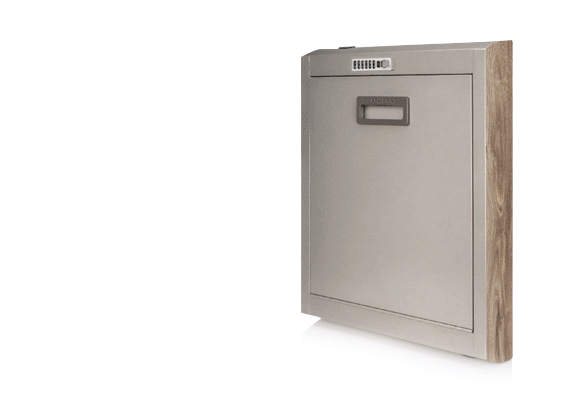A well-organized medical office is the heartbeat of patient care, administration, and the overall health-care process. In a smaller medical facility, efficient organization is the key to ensuring the smooth operation of your business and the impeccable delivery of health services. But how do you get it right, and how do you avoid the common pitfalls?
Let’s discuss the essential dos and don’ts for organizing small medical offices. We’ll cover the minute details that can make or break your medical office setup, from establishing workflows to shunning non-compliance.
The Importance of Organizational Excellence in Health Care
Prioritizing organization in health-care settings goes beyond having a tidy office—it’s a patient safety issue. Medical mistakes are a leading cause of patient harm.
Efficient organization aids in preventing errors and ensures that patient data and resources are easy to access.
April, which many recognize as National Safety and Health at Work Month, is the perfect time to reassess and refine office systems to provide a safer and more efficient work environment.
Dos for Organizing a Small Medical Office
Creating an optimally organized small medical office begins with strategic planning and attention to detail, ensuring that every aspect works toward enhancing patient care and operational efficiency. By implementing these five smart solutions, offices can significantly reduce clutter and streamline processes.
1. Establish Clear Workflow Processes
Smooth coordination is essential for patient care and staff morale. Begin with mapping out every step of the patient visit, from the front desk to the examination room. Ensure everyone understands their role and has a clear view of the bigger process. To establish a better workflow, you should:
- Designate roles
- Define responsibilities
- Employ task-tracking systems
- Conduct regular reviews to identify areas for improvement
2. Use Electronic Health Records Effectively
Transitioning to an electronic health record (EHR) system can revolutionize your office’s operations. However, it’s not just about making the switch; it’s about using the system effectively.
Combining EHR with paper medical records can offer a comprehensive approach to patient data management. Ensure that you give your staff adequate training on the EHR system and monitor its usage. Over time, it will enable streamlined documentation, quicker access to patient data, and improved coordination among health-care providers.
3. Maintain a Clean and Organized Workspace
A clean workspace is crucial for infection control and patient well-being. It also speaks volumes about professionalism and attention to detail. Incorporating ergonomic furniture, such as wall-mounted medical cabinets, in each workspace and strategically repositioning items can greatly enhance workspace organization.
We recommend setting a daily and weekly cleaning schedule and conducting meetings to stress the importance of proper waste disposal.
4. Implement Effective Appointment Scheduling Systems
Appointment scheduling often determines the pace and efficiency of your office. Implement systems that allow for appropriate appointment durations, slots for emergency cases, and clear patient communication regarding delays or cancellations.
5. Ensure Compliance With Health-Care Regulations
Compliance with regulations is essential, particularly concerning the Health Insurance Portability and Accountability Act (HIPAA). HIPAA serves to protect patient confidentiality and encourage uniform care standards.
Staying knowledgeable about health-care legislation is crucial to ensuring that you’re practicing within these important guidelines and laws. Consistent training and audits are key to enhancing staff awareness and upholding regulatory compliance.
Don’ts for Organizing a Small Medical Office
While focusing on positive actions to enhance organization and efficiency is critical, recognizing potential pitfalls is equally important to safeguard against common mistakes that can undermine the smooth operation of a small medical office.
Neglecting these don’ts can lead to decreased productivity, compromised patient care, and increased stress among staff.
1. Avoid Clutter and Disorganization
Clutter impedes workflow and can lead to misplaced items, missed appointments, and errors in patient care. Establish a policy for maintaining an organized, clutter-free workspace. This includes encouraging regular purges and reorganizations to keep the office in top shape.
2. Don’t Overlook Staff Training and Communication
Your staff are your most valuable assets. Insufficient training can lead to confusion, errors, and dissatisfaction. Prioritize an open line of communication and invest in continuous staff training. This will foster an environment that encourages feedback and collaboration, thus creating a healthier and more efficient working culture.
3. Steer Clear of Outdated Equipment and Technology
Using outdated tools and equipment can slow down your office and lead to system failures. Assess and upgrade your office’s equipment and technology regularly. Over time, investing in the latest technology will save time, increase productivity, and improve patient satisfaction.
You can identify if your equipment and technology needs an upgrade by the following:
- Performance Issues: Slow response times, frequent malfunctions, or a decline in accuracy and reliability signal.
- Insufficient Manufacturer Support: When manufacturers no longer provide updates, technical support, or replacement parts for a piece of equipment.
- Incompatibility With New Software or Systems: If your current equipment can’t integrate with newer software, systems, or devices.
- Increased Maintenance Costs: A noticeable uptick in repair and maintenance expenses.
- Compliance and Security Risks: Equipment that no longer meets current health-care regulations or poses a risk to patient data security needs immediate evaluation for replacement.
4. Avoid Non-Compliance With HIPAA Regulations
HIPAA violations can significantly damage the reputation of your medical office and lead to serious repercussions.
That’s why you need to invest in comprehensive training for all staff members to ensure they are thoroughly knowledgeable about HIPAA guidelines. Implementing these protocols and stringent measures to safeguard patient data privacy is paramount in maintaining compliance and fostering trust with patients.
5. Refrain From Overbooking Appointments
Overbooking can lead to long wait times, frustrated patients, and rushed appointments that compromise patient care. Appropriate scheduling with buffer times will ensure a smoother patient flow and better quality of care. By optimizing scheduling practices, health-care providers can enhance patient satisfaction and overall efficiency.
Start Organizing Today
Effective organization is at the core of outstanding health-care services. By considering these dos and don’ts of organizing a small medical office, you can transform your space into a well-oiled machine where patient care is the central focus and operations run efficiently.
Commit to continuous improvement, stay abreast of the latest industry trends, and nurture a workplace environment that encourages order and excellence.
Remember, in the health-care symphony, your small office plays a crucial part. By following these guidelines, your office will be ready to deliver harmonious care to every patient that walks through your doors.







